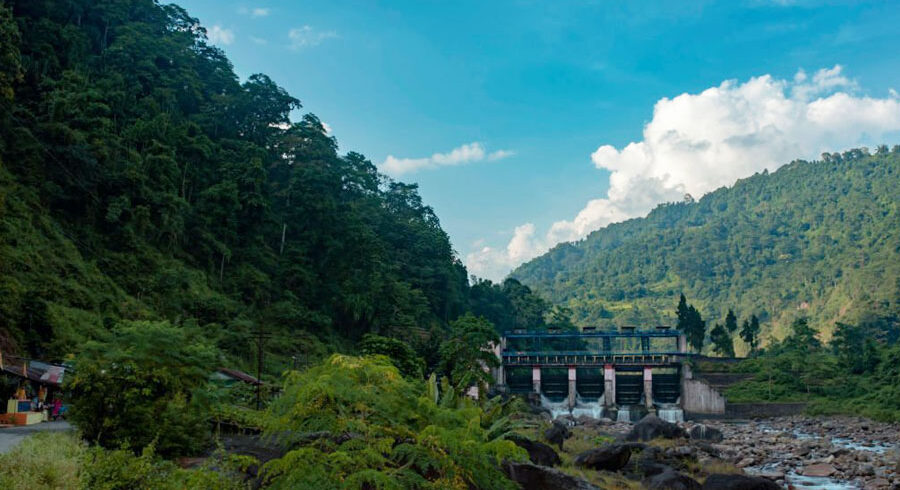Bindu, which is located in the foothills of the Himalayas, is well-known for its cardamom plantation. Bindu is a hill station blessed with beautiful scenery, and the travel there is in and of itself an amazing experience.
It can be fascinating to go to Bindu via the dense deciduous forest of Chapramari, the oldest forest reserve in West Bengal, while observing some wild creatures like bison and elephant. Tourists can also stop at the Gairibas Diascorrea Plantation on the road to Bindu, which may be a haven for botany enthusiasts as it contains a sizable area set aside for the production of medicinal plants.
The final hamlet of West Bengal is located 107 kilometers from Siliguri, surrounded by Indian and Bhutanese hills. Bindu has become a well-liked offbeat destination in the Dooars region, perched at a height of 2000 feet beside the meandering river Jaldhaka, scenically graced with the view of intimidating lofty hills, and increasing demand for tourists in the area.
A natural boundary between Bhutan and India is created by the meandering river stream that runs along the scenic Bindu, which is not far from the Indo-Bhutan border. One of the less well-known hill towns that offers breathtaking views of picturesque scenery is Bindu.
One of Bindu’s most well-known attractions is the Bindu Dam, which is located on the river Jaldhaka between India and Bhutan. There are numerous other tourist attractions in and around Bindu as well. The confluence of three rivers near Bindu creates the River Jaldhaka.
The three rivers, Bindu Khola, Dudh Pokhri, and Jaldhaka, all flow out of Sikkim’s Kupup Lake, a little glacial lake. The major goal of building the Bindu Dam was to manage the water supply going to the Jaldhaka Hydel Project in Jhalong. The dam provides a sweeping perspective of the hills surrounding Bindu and the raging river.
In addition to providing a breathtaking view, Bindu Dam has developed into the ideal location for raising migratory birds, making Bindu a popular tourist attraction in the Dooars region.
Due to the abundance of options it provides to engage in outdoor pursuits like hiking and trekking, the forest that surrounds Bindu is well known among thrill seekers. A 15 kilometer drive from Bindu, tourists can also visit the Godak Village.
The tribal inhabitants of Godak Village worship a rock that is revered as a sacred site because a river stream is created by it and it never dries up. The visitors to Bindu have been enchanted by Bindu’s amazing locations.
Bindu has its own appeal in every season, but if you want to see the rarely seen snow-capped mountains from the dam, the winter season, from November to mid-January, is the finest time to go. At this time, migrating birds are also present close to Bindu. Enjoy the magnificent image of a dense, green forest with a whirling river stream coming from the Bindu dam.
Bindu in the Dooars is the perfect place for you and your loved ones to unwind and relax if you want to get away from the hectic city life and snuggle in the lap of nature. Take a stroll through the forest while observing some unique birds or relax in the peaceful atmosphere of Bindu while listening to the gushing sound of the flowing water.

